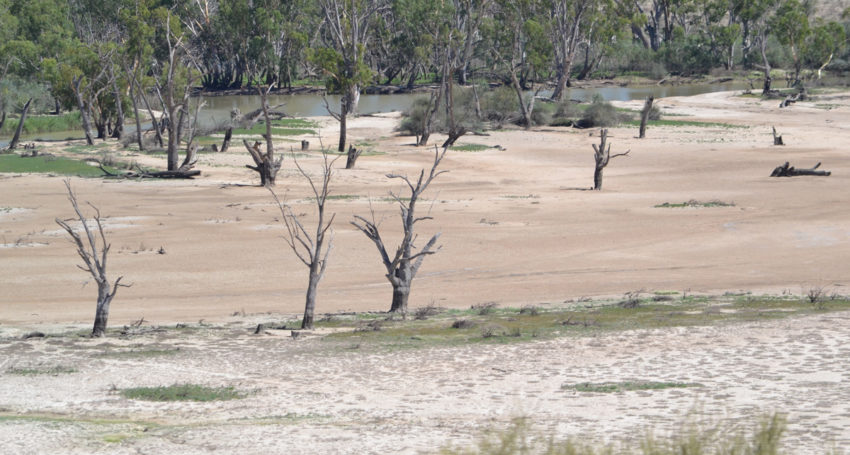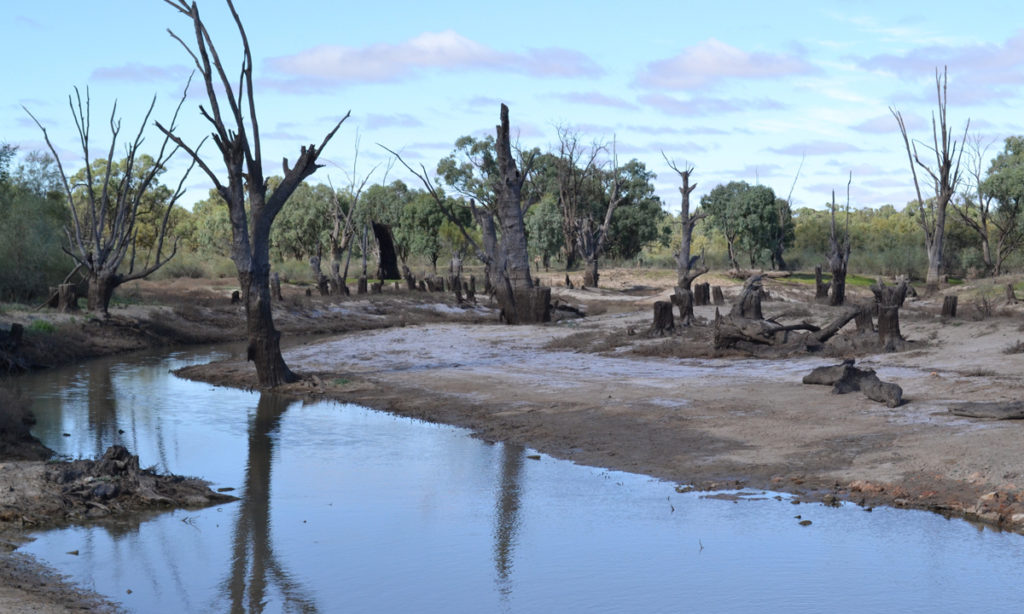Underground oases could save ailing Murray floodplains
Environment
Underground bodies of freshwater could hold the key to the health of the fragile floodplains of Australia’s Murray Darling Basin.

Sign up to receive notifications about new stories in this category.
Thank you for subscribing to story notifications.

Flinders University researchers in Australia have discovered freshwater “lenses” that float on the saltwater aquifer below floodplains that run adjacent to the River Murray for most of its length.
The researchers say the lenses could potentially be expanded and play an important role in sustaining the floodplains that are under threat because of reduced inundation, salinity and increasing irrigation pressures.
The Murray-Darling is Australia’s largest river system and runs through south eastern Australia from New South Wales and Victoria and into South Australia where it meet the Southern Ocean. The river system, which is used extensively for irrigation, is managed by the Murray-Darling Basin Authority.
Flinders University Hydrogeology Professor Adrian Werner said the reduction in flooding events in recent decades was having a major impact on floodplain and wetland vegetation, forcing the Murray-Darling Basin Authority to look at ways to save the fragile ecosystems.
“One of the factors they now consider to be important is the salinity of the groundwater under the floodplain,” Professor Werner said.
“If you have a tree on the floodplain that’s taking considerable amounts of fresh water and it’s not being flooded then it’s going to start drawing on the deeper water and if that water is salty then it’s going to have a considerable impact on the vegetation.
“What we discovered was that in the River Murray floodplains there are freshwater lenses that float on the salt water that extend underground out from the river into the floodplain.”
Professor Werner, who was recently described as Australia’s research field leader in Hydrology and Water Resources, has also spent considerable time studying the underground water resources of Kiribati, an island nation in the central Pacific.
He likened the freshwater lenses floating on the Murray floodplain aquifers to the freshwater lenses found floating on underground seawater in islands.
“On an oceanic island, if you drill deep enough you’ll hit seawater but above the seawater you’ll have freshwater and it floats because the freshwater has less density than the seawater,” Professor Werner, pictured below said.

“In the Murray River the aquifers around the river in many places contain ancient saltwater, which is basically rainfall that’s concentrated through evaporation to levels that in some cases where the salinity is even higher than seawater.
“When the floodplain aquifers also contain saltwater that can have a significant impact on the vegetation because if the groundwater is salty it can make the soil salty and if the soil goes salty the evaporation can concentrate that salt and kill the vegetation.
“But if the aquifer has a freshwater lens floating on top of it, this can maintain vegetation because now they have a freshwater supply under their roots.”
Floodplain vegetation is important as it uses groundwater in the soil profile, preventing water and salts rising to the surface or being transported to the river.
However, irrigation can increase the height of the water table, dissolving salt in the soil and bringing salt into the root zone of crops or into aquifers that flow into the river.
Flooding is the natural process by which excess salts are periodically removed from the floodplain and the river system. But the practice of floodplain harvesting – where irrigators divert overland flows into irrigation stores after rain events – is thought to be a contributing factor to increasing salinity, dropping river levels and mass fish kills earlier this year.
Professor Werner said the presence of freshwater lenses under the floodplains and wetlands offered a ray of hope for the under-threat ecosystems.

He said the freshwater lenses were kilometres wide in some areas under the floodplain but spanned only tens of metres in other places.
“Until we did our analysis no one had any idea about the physics of those freshwater lenses or even thought they could be there.
“The intuition was that there shouldn’t be freshwater there but we showed using a lot of the theory from the (Pacific) islands that in fact there should be freshwater lenses there, we have seen it in our measurements and we can explain it using the physics and numerical models we’ve used on islands to show that those freshwater lenses are real.”
The South Australian researchers from Flinders have visited some of the floodplains to take samples from the freshwater lenses in a collaboration with researchers from Monash University and the South Australian Government.
Professor Werner said the freshwater lenses were not just a critically important underground water source for vegetation, they also played a role in regulating river salinity levels.
He said the freshwater lenses could also reduce the amount of salt flowing to the river.
“We’re also looking at ways to potentially insert materials into the floodplain aquifer to artificially grow the freshwater lens without having to pump water or change the floodplain hydrology.
“Knowing and being able to predict where those freshwater lenses are and what the relationship is between them and vegetation is a critical part of the story of protecting the Murray River floodplain ecosystem.

“It’s mostly about protecting the floodplain vegetation and looking for ways to keep those ecosystems healthy among other methods like artificial inundation and various techniques being proposed by the Murray-Darling Basin Authority.”
Professor Werner will this month speak at the Australasian Groundwater Conference in Brisbane.
His other research has been exploring freshwater aquifers under the sea, which has led to the recent publication of seven papers that cover a range of issues from improving methods of obtaining offshore freshwater estimates to better understanding how onshore events influence and affect subsea freshwater aquifers.
The research has focused on major offshore aquifers in South Australia’s south east and near Perth, Western Australia.
Several severe recent water shortages in coastal cities around the globe – including Cape Town during 2018 – and concerns about Christchurch’s emergency supply raised the possibility of accessing offshore freshwater, even if only as an emergency measure.
However, Professor Werner warns that current knowledge of the extent of offshore freshwater is limited, and questions already exist whether humans are already drawing on offshore freshwater reserves while pumping fresh groundwater from coastal aquifers.
“Since the late 1960s, groundwater scientists have been intrigued by evidence of freshwater beneath the sea, and in the following decades, understanding subsea fresh groundwater has advanced and is now understood to be a global phenomenon,” Professor Werner said.
“Our research is addressing whether we are already accessing offshore freshwater or whether this is a largely untapped resource that is yet to be exploited.”
Jump to next article




